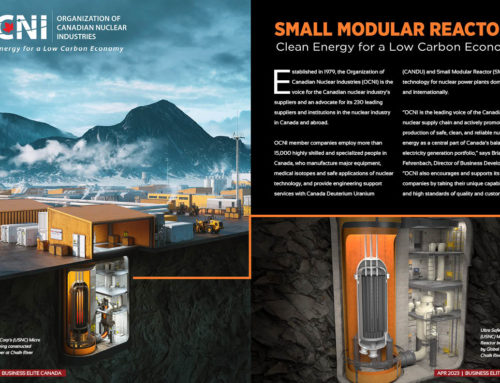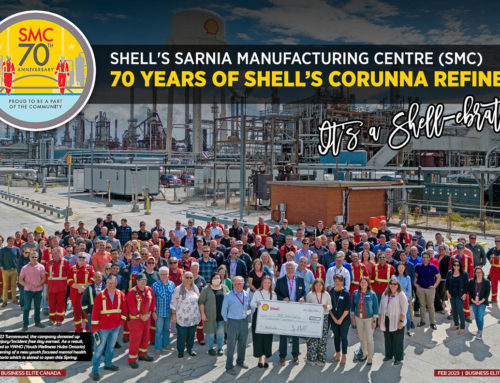
A market for uranium
We all know uranium is used to fuel nuclear power plants and reactors, which are crucial sources of energy. With energy consumption increasing and new nuclear power plants being built worldwide, the demand for uranium will only increase in years to come. Canada-based uranium exploration and development company Fission Energy Corp has a significant high grade discovery at its Waterbury Lake property and in 2011 made a high grade boulder field discovery at its Patterson Lake South property. Both are located in Saskatchewan’s Athabasca Basin: home of the richest uranium deposits in the world. . Fission Energy has properties in Saskatchewan, Quebec, and Peru. Spun out of Strathmore Minerals, which had near-term production assets in the United States, a number of Fission Energy’s properties were already staked. In particular, Fission Energy acquired Strathmore’s assets in the Athabasca Basin in Saskatchewan, a world premiere district for uranium where exceptionally high-grade deposits can be found.
“It’s unlike anywhere else on earth,” says Ross McElroy, CEO and President of Fission Energy. “The deposits in the Athabasca Basin are better quality resources and are higher grade.”
Twenty percent of the world’s uranium and 100 percent of Canada’s supply derives from this region. With 9 properties in the Athabasca Basin and over 200,000 hectares staked to date Fission Energy is positioned as a potential leading force in the uranium exploration industry.
Strategic partnerships and the growth of nuclear energy
There are approximately 440 nuclear power plants in the world. This number, says McElroy, could increase dramatically in the coming decades. European and North American countries have traditionally relied a great deal on nuclear power; France runs around 80 percent of its energy requirements from nuclear generators and the United States has 25 percent of the world’s nuclear power plants. However, McElroy says the real growth in the industry is coming out of Asia.
“China and Korea are emerging countries and their demands on the energy sector are huge because their populations are booming and their growing economies are vast. With the growing economy, you have higher energy requirements,” explains McElroy.
There are currently 13 nuclear power plants operating in China and 26 under construction. McElroy says China also has plans to construct over 100 more plants in the near future.
“That’s a huge addition to the overall grid,” he says.
As an exploration company, Fission Energy is constantly searching for resources to feed into this future market, 10 to 15 years down the line. The average project from discovery to mining takes at least 10 years.
This booming growth sector in Asia is one of the reasons Fission Energy has decided to partner up with the Korean Utility Company. The partnership is crucial and effectively benefits both sides. Korea is currently bidding to build new nuclear plants in regions such as the Middle East and is winning many new contracts.
“They need uranium for the long term and this allows them to provide support over a long period of time. It’s important for a junior company to have some security out in the future so that their projects will be supported,” says McElroy.
The projects
Of all their projects, McElroy says Waterbury Lake in the Athabasca Basin is the number one priority.
“It’s right in the heart of the uranium mining district,” he says.
The company made a high-grade discovery in the region in 2010 and is continuing to grow the deposit. Fission Energy is quite confident Waterbury will continue to churn out great results: the 40,256-hectare property is currently being drilled in an expanded 88 hole 32,630m drill program with a 26 percent increase in budget from what was originally planned. Fission Energy owns a 60 percent share of Waterbury Lake, while the Korea Waterbury Uranium Limited Partnership owns 40 percent. The property also lies 30 meters away from properties Rio Tinto has purchased for $654 million where a significant discovery was made four years ago. This merely emphasizes the strategic nature of Fission’s project.
Another important project for Fission Energy is also located in the Athabasca Basin: Patterson Lake South. This past summer, the company discovered high-grade uranium boulders. “We’re continuing to follow up on that and hopefully make a discovery at the source of the boulders,” says McElroy.
Over in eastern Canada, Fission Energy has secured deposits at Dieter Lake in Quebec. Originally owned by a German utility company in the late 1970s, Fission Energy acquired the lands in 2002. The property has a sizable inferred resource of 24.4 million pounds.
McElroy explains how his company is different from other uranium exploration companies out there: “We’re successful with a discovery. Most juniors are not.”
With the help of Bryson Drilling on the Waterbury project, Mineral Services Group for geological consulting, and various geophysics groups such as Patterson Geophysics, Discovery Geophysics, and Living Sky Geophysics, Fission Energy has been able to acquire a solid understanding of the land and how to maximize their use of it.
“Most juniors have not had success exploring in that area, but we’ve had two major successes in the last two years,” says McElroy.
Looking forward, McElroy wants the company to continue growing deposits in the next five years and sell assets as they become attractive to major mining companies. While McElroy attributes some of the success to “a certain level of good luck,” he also says the company has a very technologically capable group to support their endeavors. With advanced geotechnical and geochemical groups and a solid partnership with the Korea Utility Company, Fission Energy is just as successful as any major company. Moreover, the company is well-funded (a third of the market is strictly in cash) and their geographically-varied properties allows for lot of room for expansion. By focusing on the Athabasca Basin, a region where McElroy himself has spent a large part of his last 25 year working career, Fission Energy has wisely positioned itself in an area where their expertise gives them a competitive advantage.





